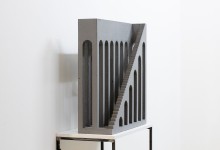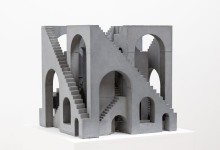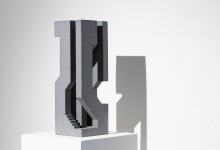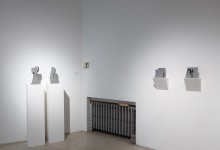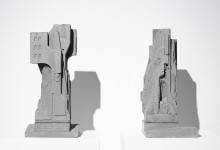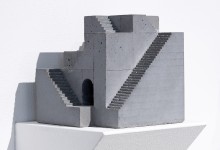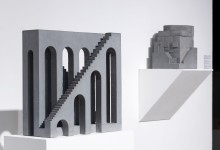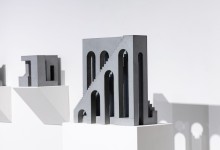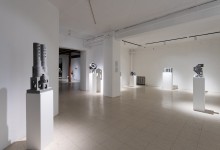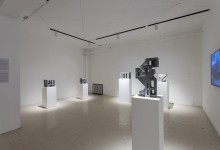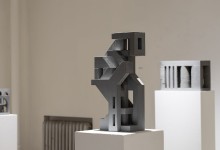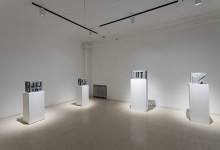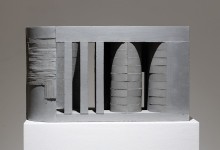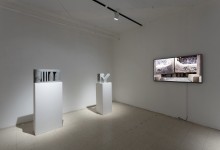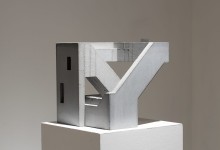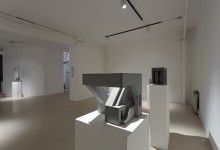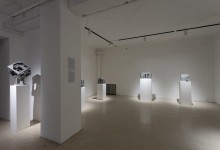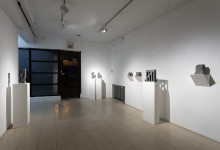David Umemoto: Infrastructures
Text by David Dorais
The concrete works of David Umemoto stand as studies about volume. At the juncture of sculpture and architecture, these miniature pieces evoke temporary buildings or monuments standing on far-away lands. The images conveyed in the mind by these works are numerous. They refer to the archaic and the ephemeral, despite the solidity and the modernity of the medium. Appearing before our eyes are pre-Columbian rock dwellings, god statues from the Andes or Easter Island, steles deteriorated by rain, remnants of modern cities having survived a cataclysm, fragments of Babylonian cities, colonial settlements brought down to their foundations, cenotaphs abandoned in the jungle…
The production of David Umemoto’s works follows a process of slow and silent transformation. The creative process seeks to imitate the cycles of nature, which are cycles of erosion and re-creation. Lines shift, change and are in a state of perpetual mutation due to the influence of time and weather. The natural architectures of geological strata and crystals stand as models: They inspire the design of the moulds in which the concrete is cast. The ductile and infinitely adaptive nature of the material enables the production of objects that are both similar and different. The development of the works is thoughtful and iterative yet it makes room for improvisation, adaptation, and spontaneous inspiration. The shapes created by Umemoto line up in sequences of combinatorial variations. Each work offers a different face but these faces all belong to the same lineage. This kinship gives a strong unity to Umemoto’s production and allows for the exploration of the theme of transformation through time and tradition.
All of Umemoto’s pieces are handmade, in order to respect an economy of means. The pressure of modernity imposes on man the obligation to evolve constantly, which leads him into an endless race towards technological improvement. As an artist, Umemoto chooses to react by taking a step backwards. His manual activities result from a desire to simplify artistic practice. Aesthetics and formalism are thus combined with a commitment to plainness. Opting for a low-tech stance, the artist wants to resist the demands of progress. He creates structured and modular pieces but these never perfectly fit together, a result of their willingly imperfect mode of production.
Umemoto’s art is rooted in Americanness: His varied creations take their impetus from a desire to start settlements and to colonize wild lands, where nature is always on the verge of resuming its rights. When one sees Umemoto’s architecture sculptures, one thinks of the modernist complex of Brasilia by Niemeyer, lost in the Amazonian jungle, or of the complex of Chandigarh by Le Corbusier, in the heart of India. The walls rising towards nowhere, the curves running into ceilings, and the staircases leading into the void are reminiscent of the mysterious Prisons of Piranesi. One way or another, these are always works where imagination joins forces with a contemplative discipline.



